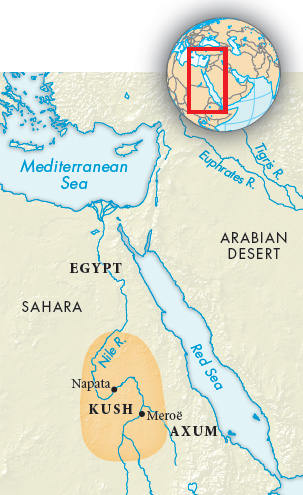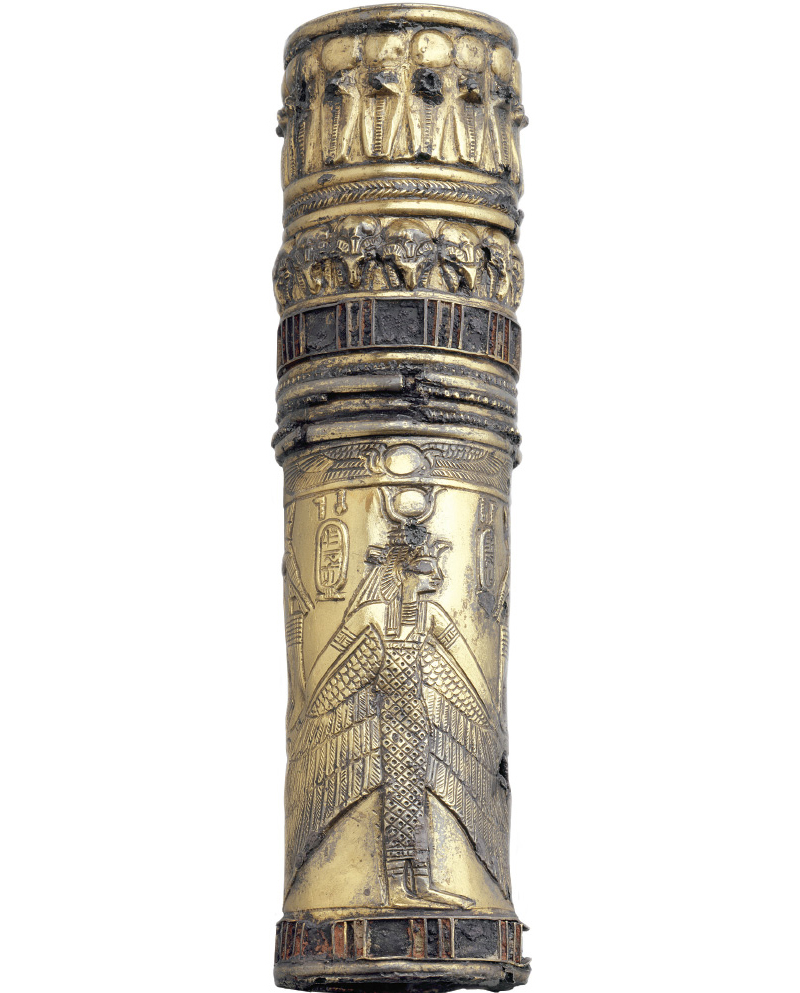A History of Western Society: Printed Page 34
A History of Western Society, Value Edition: Printed Page 37
The Decline of Egypt and the Emergence of Kush

Although the treaty between the Egyptians and Hittites in 1258 B.C.E. seemed to indicate a future of peace and cooperation, this was not to be. Groups of seafaring peoples whom the Egyptians called “Sea Peoples” raided, migrated, and marauded in the eastern Mediterranean. Just who these people were and where they originated is much debated among scholars. They may have come from Greece, or islands in the Mediterranean such as Crete and Sardinia, or Anatolia (modern Turkey), or from all of these. Wherever they came from, their raids, combined with the expansion of the Assyrians (see page 44), led to the collapse of the Hittite Empire. The Hittite capital city of Hattusa was burned to the ground in 1180 B.C.E. by an army of many different peoples, and though small states re-emerged in Anatolia, these were very much under the influence of Assyria.
In Egypt, the pharaoh Ramesses III (r. 1186–1155 B.C.E.) defeated the Sea Peoples in both a land and sea battle, but these were costly, as were other military engagements. Ramesses appears to have also been the subject of an assassination plot, which he survived, but Egypt entered into a long period of political fragmentation and conquest by outsiders that scholars of Egypt refer to as the Third Intermediate Period (ca. 1070–712 B.C.E.). The long wars against invaders weakened and impoverished Egypt, causing political upheaval and economic decline. Scribes created somber portraits that no doubt exaggerated the negative, but were effective in capturing the mood:
The land of Egypt was abandoned and every man was a law to himself. During many years there was no leader who could speak for others. Central government lapsed, small officials and headmen took over the whole land. Any man, great or small, might kill his neighbor. In the distress and vacuum that followed … men banded together to plunder one another. They treated the gods no better than men, and cut off the temple revenues.1

The decline of Egypt allowed new powers to emerge. South of Egypt was a region called Nubia, which as early as 2000 B.C.E. served as a conduit of trade through which ivory, gold, ebony, and other products flowed north from sub-Saharan Africa. Small kingdoms arose in this area, with large buildings and rich tombs. As Egypt expanded during the New Kingdom (see “The Egyptians” in Chapter 1), it took over northern Nubia in what were sometimes brutal conquests, incorporating it into the growing Egyptian empire. The Nubians adopted many features of Egyptian culture, including Egyptian gods, the use of hieroglyphics, and the building of pyramids. Many Nubians became officials in the Egyptian bureaucracy and officers in the army, and there was significant intermarriage between the two groups.
With the contraction of the Egyptian empire in the Third Intermediate Period, an independent kingdom, Kush, rose in power in Nubia, with its capital at Napata in what is now Sudan. The Kushites conquered southern Egypt, and in 727 B.C.E. the Kushite king Piye (r. ca. 747–716 B.C.E. ) swept through the Nile Valley to the delta in the north. United once again, Egypt enjoyed a brief period of peace during which the Egyptian culture continued to influence that of its conquerors. In the seventh century B.C.E. invading Assyrians (see page 44) pushed the Kushites out of Egypt, and the Kushite rulers moved their capital farther up the Nile to Meroë, where they built hundreds of pyramids. Meroë became a center for the production of iron, which was becoming the material of choice for weapons. Iron products from Meroë were the best in the world, smelted using wood from the vast forests in the area. They were traded to much of Africa and across the Red Sea and the Indian Ocean to India.